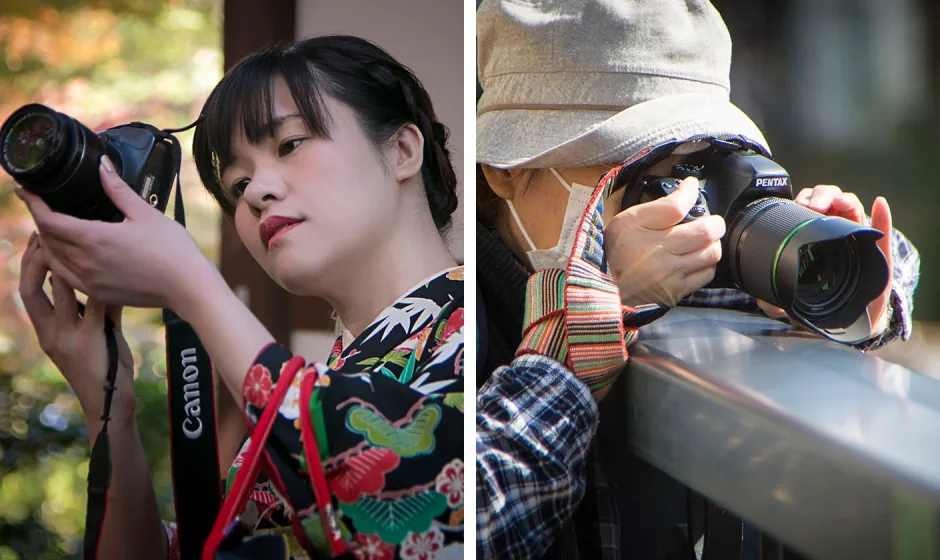Every photographer has their own style, and if you’re looking to improve your photography skills, it’s important to know some of the basic rules. These secrets will make your photos look amazing, and help you develop your own unique style!
First, learn about composition. A well composed photo is more interesting and balanced, which can add a professional feel to your images.
1. Focus on your subject
Getting your images properly focused is one of the most important aspects of photography. It can make the difference between a sharp and blurry image.
To focus on your subject, use a small aperture setting to get a shallow depth of field. You can also point your camera’s focus point at your subject and half press the shutter button to lock focus. This way you can recompose your image without worrying about it being out of focus.
If you’re shooting something moving, try using your camera’s continuous focus mode (also called AI Servo or AF-C). This will allow the camera to track your subject as it moves around.
2. Set up your shot
There’s a lot that goes into making sure your shots look great. From the shot list to the call sheet, there are plenty of little details that need to be addressed before you take a picture.
Aperture, shutter speed and ISO are three factors that determine the exposure of a photo. Understanding how they work together will allow you to experiment with different looks and get the perfect shot.
The rule of thirds is an important compositional tool that helps balance your photos. It suggests that you place the subject of your photo in one of the corners or along a grid line to draw viewers’ attention away from a centered image.
3. Learn the rule of thirds
The rule of thirds is a composition technique that can help you create more dynamic and striking photos. It involves dividing the image into thirds horizontally and vertically, then positioning important elements of the scene along these lines or intersections.
The idea is that the human eye is naturally drawn to these points, which can make an image more balanced and aesthetically pleasing. It can also help draw the viewer’s attention into and through the image, making it more engaging.
To practice this technique, try examining the work of your favorite photographers and thinking about how they use the rule of thirds in their compositions. Keep in mind, though, that the rule of thirds is only a guideline and can be broken for artistic effect.
4. Look for symmetry
Symmetry is one of the best ways to add balance and harmony to your compositions. But it’s not always easy to find. The easiest place to look for symmetry is in reflections, but you can also find it in other types of scenes.
For example, vertical symmetry is often found in architectural photography. This type of symmetry emphasizes the height and structure of buildings. You can also create vertical symmetry by using leading lines, which help guide the viewer’s eyes through the image.
Another way to use symmetry is by using patterns. This type of symmetry can add depth and vibrance to your photos.
5. Take advantage of natural light
Natural light bathes a room in a rich full spectrum hue that light bulbs can’t mimic, and it’s free. It also gives us vitamin D which helps with healthy bone and muscle growth, while boosting the immune system. If you’re looking to flood your home with sunlight, consider opening your windows as often as possible and replacing dark block colors with lighter ones that reflect rather than absorb the light.
Daylighting is a popular way to reduce energy costs and create a welcoming and energizing space. It can even help lower your stress levels and boost your productivity!
6. Don’t be afraid to blur
Blurring can be a great way to hide private information or unnecessary details. This is particularly useful when sharing screenshots for IT help desk documentation, common workflows or how-to docs, or for any other situations where you need to share sensitive information but don’t want it to be visible.
Blurring can also be a storytelling technique that can evoke emotion or create tension. Consider using it for sports or automotive photography, or to make a chaotic scene more manageable.
7. Be present
Even though photographers spend a lot of time behind the camera, they still can’t help but be present in their surroundings. They see little details that might go unnoticed without a camera, from the way the wind moves flowers to how a bride gazes at her groom during their first look.
Becoming present can help you to capture more beautiful photographs by allowing you to be more selective in what you choose to photograph and how you approach it. For example, instead of always trying to find the perfect light or weather, embrace it as it is – whether that’s rich and vibrant or whispering subdued.



